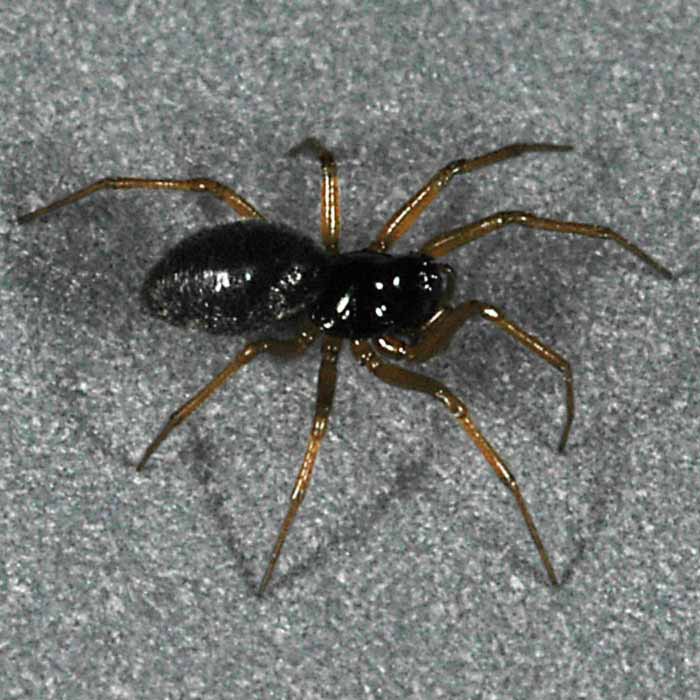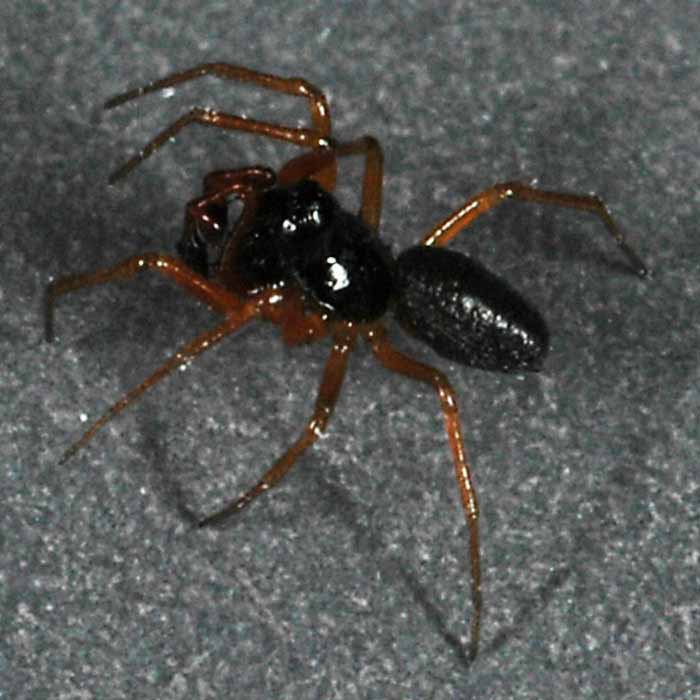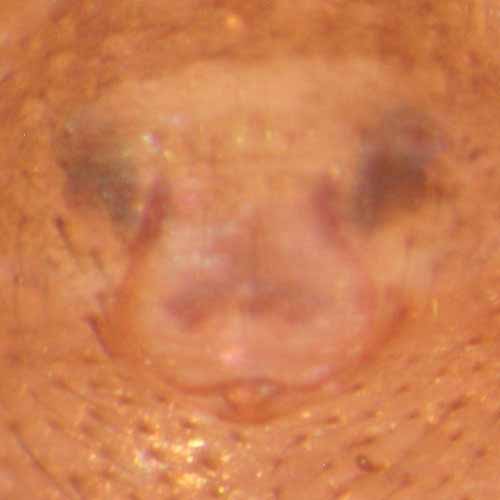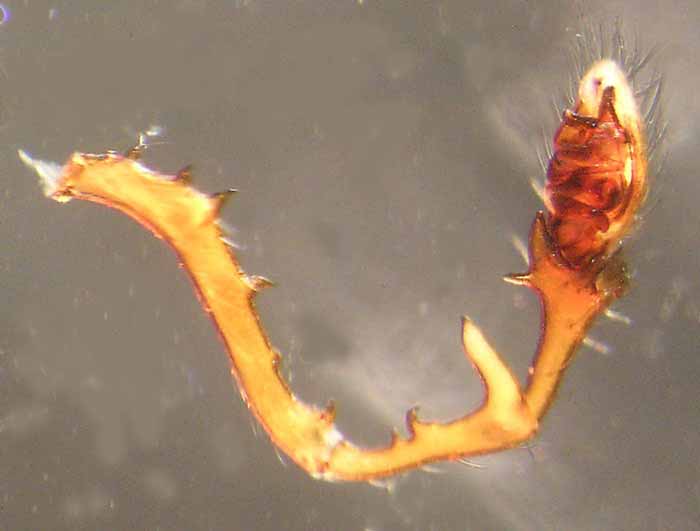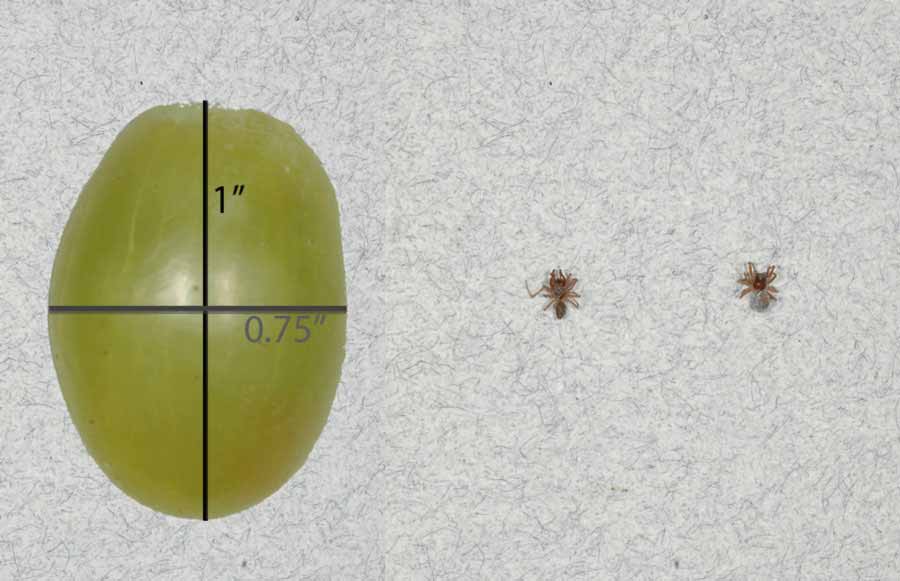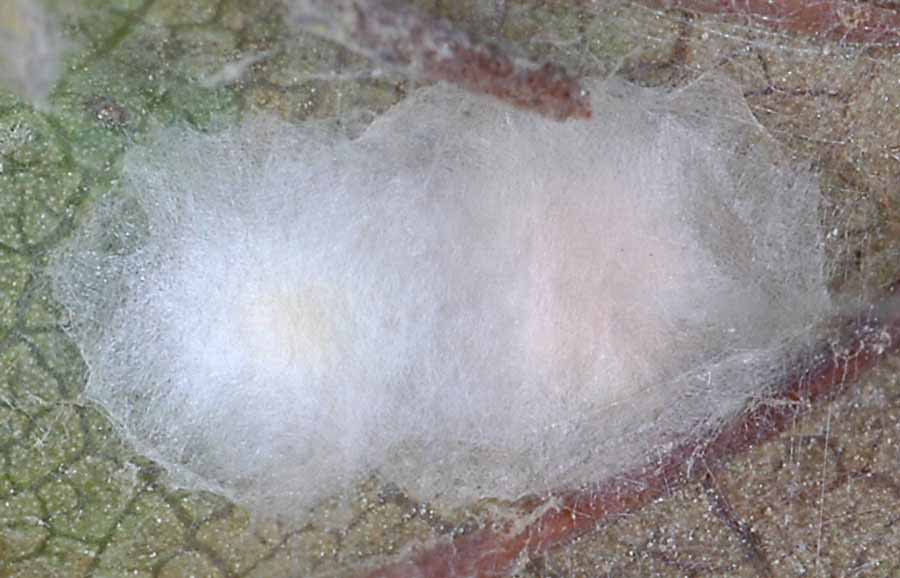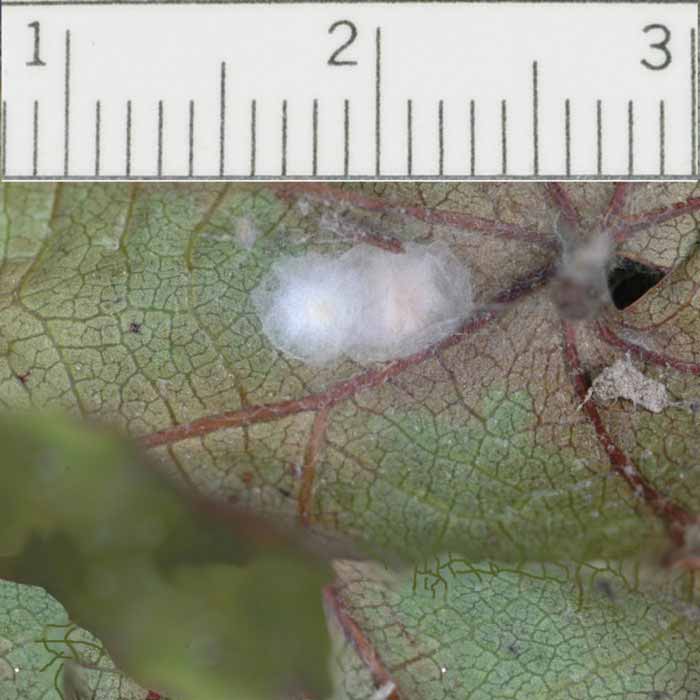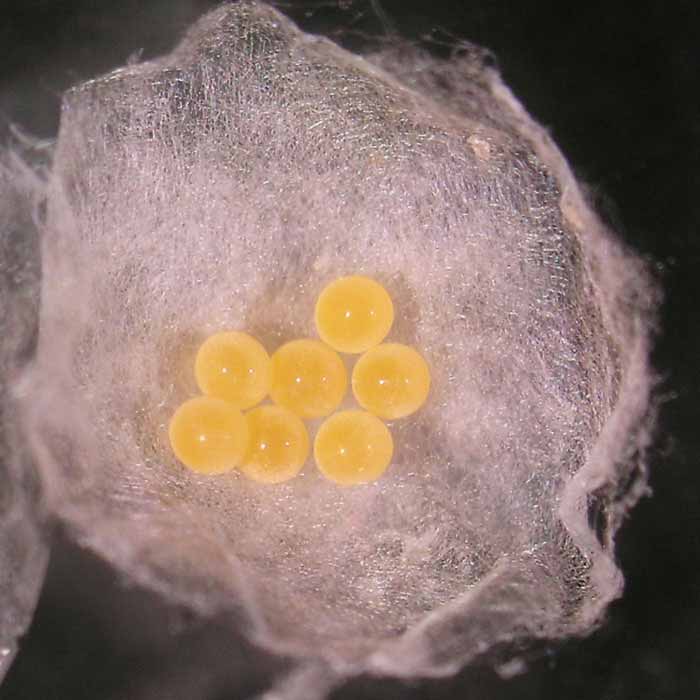Erigone dentosa
|
adult female, live |
|
adult male, live |
|
female genitalia; epigynum |
|
male genitalia; palp |
|
grape size comparison with adult spiders; male (left), female (right) |
|
egg sac |
|
egg sac with scale (cm) |
|
egg sac with eggs exposed |
Current valid name
Erigone dentosa O. P. Cambridge (family Linyphiidae)
Recognition and diagnostic features
Tiny spider, dark magenta to black colored abdomen and cephalothorax, male carapace elevated and palpal tibia and femora with many large spines and hooks.
Related or similar species
Cryptachaea porteri, Phrurotimpus mateonus, Theridion melanurum, Zelotes nilicola
Spider
Body lengths when mature: male: 2 mm, female: 2.2 mm
Immatures resemble miniature adults.
Egg sac
Description: tiny sac, in depression, flimsy silk covering eggs which are visible through silk, female may guard eggs
Number of eggs per sac: 12.3 ± 6.3
Size of egg: 0.47 ± 0.015 mm
Time of year eggs are likely to be laid: early season to June
Distribution
In California: most of the state
Elsewhere: Washington, Utah
Native to North America
This species has been transported and become established outside of its range.
Biology
Tiny, web-spinning spider. May be very abundant in agroecosystems of various crops, but in grapes appears to disappear prior to harvest.
Status in table grapes
Level of Incidence: can be abundant
Level of Concern in New Zealand: WPNZ (May 2010) nr, BORIC (Dec 2011) nr (not listed), MAF-BPRA (2002) nr (coding definition)
Level of Concern in Australia: WPAU (2006) nr (coding definition)
Level of Medical importance: none
Common name
None for species, dwarf spiders for family
Taxonomic history
Stable
Selected references
Crosby, C. R., and S. C. Bishop. 1928. Revision of the spider genera Erigone, Eperigone, and Catabrithorax (Erigoneae). Bull. New York State Mus. 278: 3-74.

